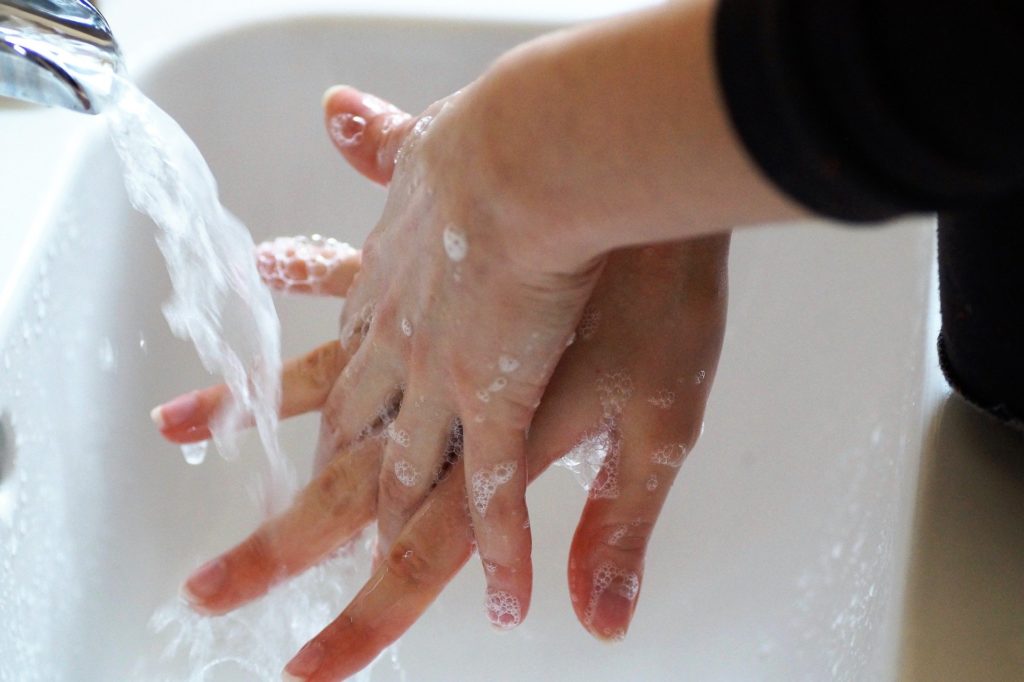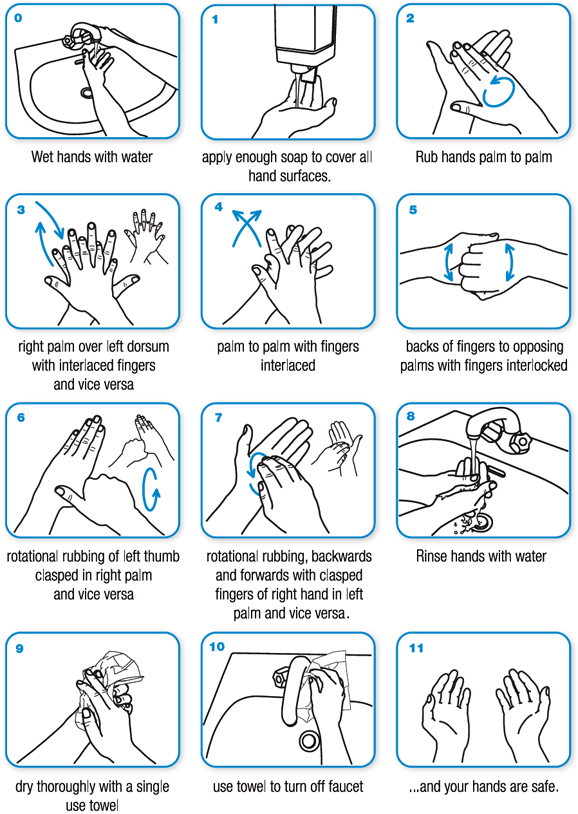Handwashing is Your Protection Against Infection

I completely forgot that May 5 was the World Health Organization (WHO) campaign to promote the global hand hygiene campaign “SAVE LIVES: Clean Your Hands.” This campaign is especially important in light of the Covid19 pandemic. Handwashing is second nature to me and was something that was impressed upon me and my siblings growing up. I wouldn’t consider myself a germaphobe, and I don’t have hand sanitizers attached to my key rings or scattered around my home and office. I believe in handwashing, so I make sure that I wash my hands regularly as people can get sick from the germs unwashed hands leave on shared objects like doorknobs, keyboards, and other equipment in the home or workplace. We should wash our hands even when they are not visibly dirty. Studies have shown that hand washing is more effective at removing pathogens than hand sanitizers. While I’m not advocating for one over the other, hand sanitizers are a quick solution in the absence of soap and water.
I didn’t realize we hand a handwashing issue nationally until I was waiting in line at an airport restroom last September. I observed that quite a few persons came out of the restroom stalls without washing their hands or sanitizing them. Studies have shown that only 1 out of every 3 adults wash their hands after coughing or sneezing. An estimated 73% of adults didn’t wash their hands after handling money. When you think that germs can live for up to 48 hours on some surfaces, you see the possibility of a contagious disease infecting so many persons.
Hand to hand contact spread pathogens There is so much information on handwashing, yet it is noticeable during the pandemic that there are still persons who did not practice regular hand hygiene. These persons tend to have a much higher exposure to COVID-19. Hand-to-hand contact can spread mild conditions, such as the common cold, and also more severe or life-threatening diseases. Infectious diseases are a particular risk to the very young, the elderly, those with a pre-existing disease, and people with a compromised immune system, such as those with HIV or AIDS.
Handwashing and Diabetes
Handwashing is the most effective strategy to prevent infectious diseases. If you are living with diabetes or caring for someone who has a diagnosis, handwashing is especially important. Handwashing with soap is more effective at removing bacteria compared with washing with only water. Wash your hand regularly when they are not visibly dirty. People with diabetes are vulnerable to infectious diseases; therefore, maintaining proper hand hygiene is a part of self-care.
Use Soap and Water
Self-care behaviors such as hand hygiene positively impact good glycemic control, reduction of complications, and improvements in quality of life. People with diabetes must check their blood glucose levels and administer insulin themselves. International guidelines recommend that measurements of blood glucose levels and insulin injections should be performed after handwashing with soap and water to acquire a reliable glucose level. General hand hygiene, such as handwashing before eating and after using the restroom, is essential to properly manage diabetes and prevent complications such as diarrhea, the common cold, influenza, and pneumonia. Type 2 diabetes reduced the body’s ability to fight infections as the body tissues have high levels of sugar, which provide the right environment for pathogens to multiply. As the pathogens multiply, they affect the body’s organs and the immune system. An infection can trigger diabetes complications such as diabeteic ketoacidosis and hypoglycemia.
By washing our hands with soap and water, we can reduce respiratory infections, the number of trips to the hospital for food-related and respiratory illnesses, and the length of stay in hospitals due to respiratory tract disease. In a study published by the iMedPub Journal in 2016, it highlighted the fact that only 50% of study participants washed their hands before testing their blood glucose. The participants who didn’t wash their hands had an inaccurate reading. The study suggested that if running water or sanitizers are not available, use the reading of the second drop of fingertip blood when self-monitoring blood glucose. The first stick area should be wiped clean with a clean napkin before attempting to extract the second drop of blood. When soap and water are not available, use alcohol-based hand sanitizer as these do not affect the blood glucose reading.
When to wash your hands
- Before, during, and after preparing food
- Before eating food
- Before and after caring for someone at home who is sick with vomiting or diarrhea
- Before and after treating a cut or wound
- After using the toilet
- After changing diapers or cleaning up a child who has used the toilet
- After blowing your nose, coughing, or sneezing
- After touching an animal, animal feed, or animal waste
- After handling pet food or pet treats
- After touching garbage
How to wash your hands
The U.S. Centers for Disease Control and Prevention recommends handwashing with soap and clean running water to prevent the spread of disease. Follow these five steps every time.
- Wet your hands with clean, running water (warm or cold), turn off the tap, and apply soap.
- Lather your hands by rubbing them together with the soap. Lather the backs of your hands, between your fingers, and under your nails.
- Scrub your hands for at least 20 seconds. Need a timer? Hum the “Happy Birthday” song from beginning to end twice.
- Rinse your hands well under clean, running water.
- Dry your hands using a clean towel or air dry them.

Washing hands with soap and water are the best way to get rid of germs in most situations. If soap and water are not readily available, you can use an alcohol-based hand sanitizer that contains at least 60% alcohol. You can tell if the sanitizer contains at least 60% alcohol by looking at the product label. Sanitizers can quickly reduce the number of germs on hands in many situations. However,
- Sanitizers do not get rid of all types of germs.
- Hand sanitizers may not be as effective when hands are visibly dirty or greasy.
- Hand sanitizers might not remove harmful chemicals from hands like pesticides and heavy metals. For more information visit: https://www.cdc.gov/handwashing/when-how-handwashing.html
Hand washing is your protection against infection. Please use soap to scrub each hand, or you’ll spread diseases to all the land.
Keep Safe. Yours in Good Health
Source:
Infections in patients with diabetes mellitus: A review of pathogenesis
https://www.ncbi.nlm.nih.gov/pmc/articles/PMC3354930/
When and How to Wash Your Hands
https://www.cdc.gov/handwashing/when-how-handwashing.html
How does type 2 diabetes affect infections
https://www.webmd.com/diabetes/qa/how-does-type-2-diabetes-affect-infections
75 Catchy Hand Washing Hygiene Slogans
https://brandongaille.com/45-catchy-hand-washing-hygiene-slogans/
Photo Credit: Image by ivabalk from Pixabay